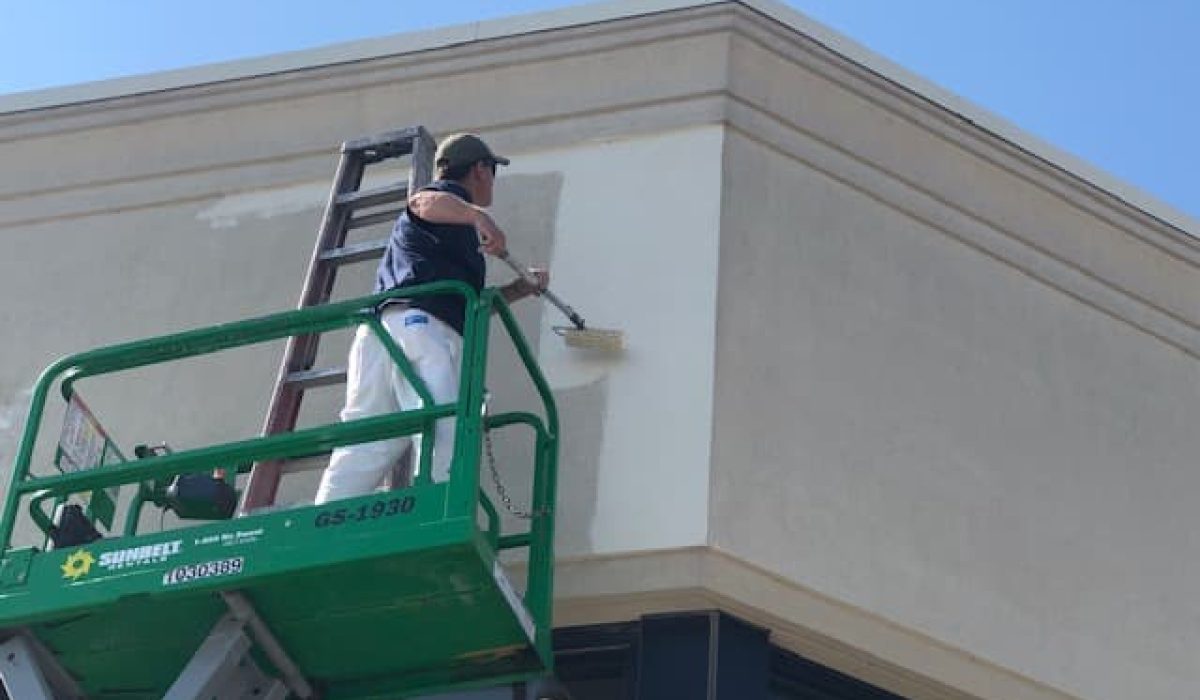Myth #1: Commercial painting is the same as residential painting
One of the most common misconceptions about the commercial painting business is that it is the same as painting homes. Both types of painting put paint on a surface, but there are a lot of differences between the two. First of all, commercial structures are frequently much bigger and more complicated than homes, so painting them takes more planning, coordination, and resources.

When it comes to paint and coatings, there are also different rules for commercial buildings. For example, many commercial buildings have strict fire codes and safety rules that must be followed. These rules may require the use of certain types of paint or coatings. Also, commercial buildings usually have more people walking through them and may get more wear and tear, so the paint and coatings must be able to handle this kind of abuse.
Myth #2: Any painter can handle a commercial project
The idea that any painter can take on commercial work is another common misconception in the industry. Commercial painting is a specialist industry that demands a greater degree of competence and experience, yet many residential painters may have the abilities and knowledge to execute a commercial painting project.
Managing big groups of people, communicating with several contractors, and staying within a certain budget are all common challenges on commercial projects. Organization, communication, and project management prowess are all required for success. Commercial painters must also be well-versed in the unique specifications of commercial structures, such as fire prevention and construction codes.
Myth #3: Commercial work is always more expensive than residential painting
Another widespread misunderstanding is that commercial painting always costs more than residential. There is no hard and fast rule that says commercial painting tasks have to cost more just because they are more involved and demand more manpower and materials.
Many factors influence the final price tag of a commercial painting project, including the building’s square footage, the difficulty of the painting itself, and the type of paint or coatings used. It’s possible that business painting will be less expensive than home painting. Particularly if the structure is substantial and the work can be completed rapidly and affordably.
Myth #4: Commercial painting is only for the exterior of a building
People often think that commercial painting only applies to the outside of a building, but this is not true. Even though the outside of a commercial building is an important part of how it looks overall, the inside is just as important.
Offices, conference rooms, bathrooms, and common areas are just some of the places in commercial buildings that often need to be painted. People often see the inside of a business building for the first time when they walk in, so it’s important to make a good first impression. Also, the inside of a commercial building wears down just like the outside, so it’s important to keep the paint and coatings in good shape if you want the building to look its best.
Myth #5: Commercial work is a seasonal business
Many people think that commercial painting is a business that only works during the warmer months, when most jobs are done. Even though some commercial painting jobs may be easier to do in the summer, it’s important to remember that commercial painting can happen at any time of year.
Commercial buildings are used all year long, so the paint and coatings on the building often need to be updated and maintained all year long.
Myth #6: Commercial work is a dirty and messy process
Even though painting can be a messy job, commercial painters are professionals who work hard to keep the mess and noise to a minimum. Commercial painters use drop cloths, plastic sheets, and air filtration systems, among other things, to keep the job site clean and organized.
Commercial painters are also trained to use professional-grade paints and coatings that are made to prevent drips and overspray. Even though there may be some dust and debris made during the preparation process, commercial painters work hard to keep the mess to a minimum and leave the job site clean and tidy.
Myth #7: All commercial paints are the same
The idea that all commercial paints are the same as residential ones is another myth about the commercial painting business. Even though there are many kinds of paint and coatings on the market, not all of them are the same.
Commercial paints and coatings are made to fit the needs and requirements of commercial buildings. They are also made to last longer and be more resistant to wear and tear. Commercial paints and coatings also come in many colors and finishes, and they can be changed to fit the needs and preferences of the building owner or manager.
Myth #8: Commercial work is always done by large teams
Even though large teams of painters may be needed for some commercial painting jobs, it is not always necessary to have a large crew on site. A small group of skilled and experienced commercial painters may be able to finish a job just as quickly as a larger group.
Myth #9: Commercial work is a slow process
Commercial painting is also thought to be a slow, time-consuming process. Even though some commercial painting jobs may take longer to finish because of the size and complexity of the building, commercial painters are trained to work quickly and use a variety of tools and techniques to get the job done faster.
Commercial painters may use scaffolding or aerial lifts to reach high areas of a building, or they may use paint sprayers or other specialized tools to apply paint more quickly and evenly. Commercial painters are able to finish projects on time and on budget by working efficiently and using the right tools.
Myth #10: Commercial work is not environmentally friendly
Commercial painting has a bad rep among environmentalists because some people assume that the paints and varnishes used are not entirely eco-friendly (VOCs). Some paints and varnishes may have volatile organic compounds (VOCs), however several VOC-free alternatives are already on the market.
Commercial painters learn how to utilize low or no volatile organic compound (VOC) paints and varnishes, which benefits the environment and the quality of the interior air. Paint recycling and waste reduction initiatives are two other ways professional painters may lessen their projects’ ecological footprint.
In conclusion, commercial painting is a highly specialized and complex industry that calls for a high level of expertise and training. Despite the widespread ignorance about the importance of commercial painting, it is essential to the maintenance and improvement of commercial structures. Hiring a skilled and experienced commercial painting contractor is the best way to ensure that your project is completed in a timely manner without sacrificing safety or quality.


